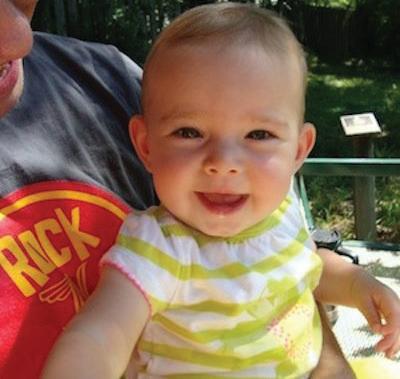
4 minute read
MANAGING EAR INFECTIONS
Exploring causes, effects, and treatment of this common illness.
by Jamie Lober
The American Academy of Pediatrics reports that middle ear infections, also known as otitis media, are one of the most common illnesses in U.S. children. While it is usually obvious, parents should know the signs of trouble.
“Signs of a middle ear infection in a child may include redness, bulging, or a dull appearance of the eardrum, which can only be assessed by examining the ear with an otoscope or microscope,” says Dr. Paul Shea of Shea Ear Clinic. Drainage like pus or blood and fever are other red flags in kids.
Causes
Ear infections can accompany colds, upper respiratory infections, or sinus infections. The outer ear infection, also known as swimmer’s ear, is also common, especially in summer. “In an outer ear infection, the ear canal as opposed to the middle ear is infected and may be swollen, tender, and painful,” Shea says. Treatment is antibiotic ear drops instead of oral antibiotics.
Colds and allergies can precipitate a middle ear infection. As for the cause, it is complicated. “Middle ear infections are thought to be caused by inadequately functioning Eustachian tubes because the tubes are too small or possibly congested by chronic allergies or infection,” says Shea. If this continues into adulthood, it is advised to seek guidance from an ear, nose, and throat doctor instead of the pediatrician or primary care provider.
Prevention
Unfortunately, ear infections cannot be avoided in most cases. Keeping your kid home from daycare and not having contact with kids who may be sick is a good idea. Be sure to keep an eye on your child’s hearing.
Hearing screening is usually done at birth or at the first well-child visit. If you are not sure if your child’s hearing has been checked, ask the pediatrician. Sometimes schools check it as well. “The best indication on whether a child has normal hearing is his speech development, and it is a safe bet that if a child is talking normally by age 18 months to 2 years that he has near normal hearing in at least one ear,” says Shea. If a child is speech delayed or not saying words by age 18 months to 2 years, a hearing evaluation should be done by a qualified ear, nose, and throat doctor.
Management
There are some things you can do to make your child more comfortable. “If he has a fever, a room-temperature bath is a good idea, and Tylenol can also help with pain and fever from an ear infection,” Shea says. If your child has a fever, refrain from giving aspirin, as it can cause a serious condition called Reye’s syndrome if he has a viral illness. “Amoxicillin is a good first-line choice, and amoxicillin/clavulanate or a cephalosporin are also commonly used,” Shea adds. With antibiotics, the ear infection typically resolves in a week or two.
When to See the Doctor
If your child presents ill by acting fussy, not eating or sleeping, becoming nauseous or vomiting, or not acting like himself, it is a good idea to see the doctor. If he only has a low-grade fever and is acting fine, he most likely does not need medical attention. Antibiotics have both pros and cons. “Antibiotics are generally indicated for an ear infection when a child is obviously ill, when there is infected or bloody material draining from the ear, or when the child is experiencing pain, high fever, or hearing loss,” says Shea. Overuse of antibiotics when they are not indicated has led to resistance in some cases.
Be sure to take ear infections seriously. If persistent and left untreated, it can affect a child’s speech. Early in life, this is the most vital. “If a child becomes speech delayed because of a hearing problem, it may be difficult for him to catch up before he reaches kindergarten and first grade,” Shea says.
The Bright Side
You will be happy to know that most kids outgrow ear infections by the time they are 7 or 8 years old. “It is believed by 7 or 8 years old that a child’s head is almost fully grown and thus their Eustachian tube has reached adult size,” says Shea. The Eustachian tube is the opening between the middle ear and the back of the nose and its purpose is to provide ventilation and drainage for the middle ear, which is what you use to hear.
What’s New
Treatment for ear infections has not changed much over the past few decades. New antibiotics have been developed, but the first line of treatment remains the same, and those remedies have been around for many years. “Ventilation tubes are still recommended when a child has more than six infections in 12 months or when antibiotics are not able to eradicate middle ear fluid,” says Shea.
For kids with severe to profound hearing loss at birth, cochlear implantation gives them the ability to develop completely normal speech and begin school in a mainstream environment. “It is important that all children be screened for their hearing at birth or at the first well-child visit, which was mandated in Tennessee several years ago as it has been in virtually every other state in the country,” Shea says.
Jamie Lober, author of Pink Power (getpinkpower.com), is dedicated to providing information on women’s and pediatric health topics.








